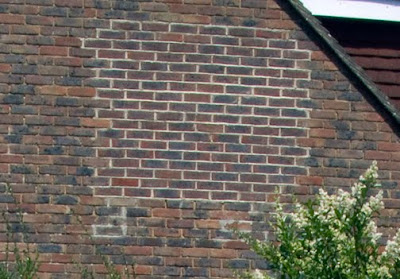When out photographing you have to have a goal, something to aim for, shoot at; and we often see goalposts painted on walls or improvised out of chairs, traffic cones, pullovers, litter-bins and so on. This kind of improvisation often stirs us photographically, but seldom stirs us mathematically. This is because these improvised goals are almost always minus a net, are netless (net loss?).
The number of rendered bricks plus the number of holes in the basketball net equals the total number of holes scored by the goal.
The Problem
To take a photograph in which a number unifies the entire picture. It is the inherent logic of numbers that is so useful in organising pictures, for it establishes the picture surface, or as it is also called, the net-gain of the picture plane.
But although purely geometric pattern will lie flat on the surface of a picture, it will convey no more mathematical proof in pictures than it would on the fabric of a chair, carpet, or wall, if it does not also contain some element of numerical consistency.
Net total of net holes 181
Net total of bricks (rendered) 129
Net total holes in basketball net 52




No comments:
Post a Comment